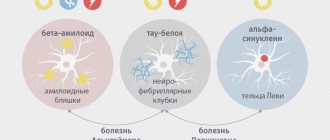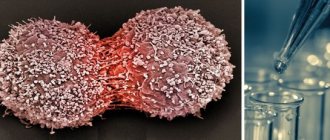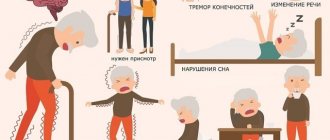Modern society is susceptible to many mental pathologies, among which a separate group are nervous eating disorders, in particular bulimia.
It is noteworthy that men suffer from this disease much less frequently than representatives of the fair half of society, due to a number of reasons that will be discussed further. Bulimia literally means “bovine hunger” in Greek. Other names for this deviation are kinorexia, i.e. wolf hunger. Bulimia nervosa is an eating disorder characterized by regular, uncontrollable bouts of overeating.
The danger is not only the fact of lack of control over the amount of food eaten, but also the subsequent unhealthy concern about controlling body weight. Therefore, most bulimics resort to radical measures designed to neutralize (eliminate) the aftereffect of consumed foods on body weight.
Types of food pathology
Bulimia nervosa has different forms of manifestation, but has a common pattern of eating behavior: periods of uncontrolled food intake alternate with periods of active weight loss. Overeating (hyperphagia) can be:
- paroxysmal;
- permanent nature;
- at night.
A bulimic is unable to independently control outbreaks of irresistible hunger. When starting to eat, a person is unable to stop on his own until he clearly feels pain in the stomach and nausea.
People suffering from bulimia are more concerned about their figure than others. After another attack, they usually feel depressed due to guilt and remorse after what happened. Therefore, patients try in any way to avoid weight gain. For this reason, bulimia is divided into two types:
- classic nervous (cleansing ). She is characterized by a constant preoccupation with food and a desire to consume it in repeated episodes. Getting rid of hyperphagia involves taking drugs that have diuretic and laxative properties, forced gastric emptying (vomiting), and enema;
- compulsive _ Its peculiarity is that uncontrolled preoccupation with food is accompanied by careful monitoring of body weight. This type is characterized by other drastic measures for weight loss - exhausting mono-diets, additional physical activity, conscious fasting. At the same time, bulimics do not rid themselves of what they eat artificially. At a certain point, a person breaks down and begins to absorb food in even greater quantities.
Experts have identified so-called atypical kinorexia . This subtype has much in common with the classic form of eating disorder. However, an incomplete picture of the clinical manifestations required for a given mental pathology does not provide grounds for a doctor to determine a final diagnosis. The reason for this is an insufficient number of key symptoms of the disease. For example, after overeating and subsequent forced rejection of food, there is a complete absence of concern about being overweight and the desire to have ideal shapes.
What causes bulimic neurosis
Bulimic neurosis or bulimia neurosis is an eating disorder characterized by excessive overeating and subsequent compensatory reactions. The reason for this behavior is a serious disturbance in the functioning of the central nervous system, as well as the presence of mental disorders.
Articles on the topic
- Necessary help for teenagers with autism 09/21/2021
- Stages of alcoholism in women: main signs 06/24/2021
- Split personality: symptoms and signs of the disease in women 06.24.2021
- The main symptoms of nervous exhaustion in women and treatment rules 06/09/2021
To date, the pathogenesis of this disease has been poorly studied, but factors contributing to the development of bulimia have been identified:
- pathological disruptions in the functioning of the central nervous system;
- abnormalities in the functioning of the thyroid gland (hormonal imbalance);
- psychical deviations;
- genetic predisposition.
In addition, there are external factors that can, to one degree or another, influence the course of the disease.
These factors include:
- alcohol addiction;
- severe stress;
- depression;
- chronic stress or overwork;
- severe exhaustion of the body.
The main prerequisite for the development of bulimic neurosis is psychological trauma in adolescence.
If a child is criticized for his appearance or is given little attention, he may begin to “stress eat.” This leads to serious mental disorders.
Manifestations and signs
The symptoms of kinorexia are determined by pathologically altered eating behavior and additional physiological indicators. The psychosomatics of such a deviation may not be expressed clearly enough, so it is important to pay attention to the auxiliary signs of the disease.
Bulimics are very similar to anorexics, but they are much more difficult to detect. While the latter can be easily identified by their unhealthy thinness, the weight of people with bulimia is close to normal. In addition, they are very ashamed of their addiction, so they try to hide it in various ways. For example, at social events they may simply not touch food, so as not to provoke a food breakdown.
The main signs of this eating disorder are:
- the first signal about the presence of a food pathology is excessive preoccupation with appearance, control of one’s weight;
- a sick person consumes an excessive amount of food at one time. These are mainly foods high in fat, starch, and sweets. A bulimic may leave in the middle of a meal to go to the toilet in order to get rid of what he has eaten. To muffle the sounds of vomiting, a person can specially create the noise of flowing water (turn on the tap, flush water in the drain tank);
- people who have eating pathologies prefer to eat alone and avoid public events;
- the patient's relatives may often notice the disappearance of large amounts of food. However, in order to hide his pathology, the bulimic tries to replace the missing products as quickly as possible even before their significant shortage is discovered;
- among pharmacological drugs such people may have a large number of laxatives;
- during a medical examination, the doctor notes an extreme degree of dehydration or disruption of the normal functioning of the gastrointestinal tract;
- bulimia leads to the destruction of teeth and gums, which can be noticed by the dentist;
- people who suffer from bulimia often complain of pain in the stomach, heartburn, swelling of the extremities, regular dizziness, ruptured capillaries on the face, swelling, women - failure of the cyclicity of menstruation
Additional physiological symptoms:
- haste when eating food, poor chewing;
- isolation in matters related to food;
- frequent attacks of irresistible hunger;
- dynamics of body weight in a positive or negative direction;
- inflammatory processes in the throat area, specific injuries on the fingers and hands that occur due to forced vomiting;
- disorders of the heart, kidneys, and liver.
Doctors state that bouts of overeating are episodic. Most often, the provocateur of such an attack of gluttony is psychosocial stress. Overeating ends in compensatory behavior: a person consciously provokes vomiting, uses special drugs that cleanse the body, significantly increases physical activity, and resorts to fasting.
A mandatory aspect for making a diagnosis of “bulimia nervosa,” in addition to uncontrolled consumption of food, is the patient’s concern about his body weight and his appearance. Most often, bulimics are dissatisfied with their weight and consider it excessive. Paradoxically, obesity or excess weight with bulimia is observed in rare cases.
Patients with kinorexia are more open when contacting a specialist. Doctors believe that the reason for this is the personal concern of such individuals about what is happening, as well as feelings of guilt and shame about this. A clinician who is sympathetic to the patient has the opportunity to obtain from him the most frank information that reflects what is really happening to the person.
What is bulimia?
With our pace of life, a lot of stress, constant tension and pressure from the media, we are looking for our way to endure, fit in, please and be loved. Some methods become destructive, drawing us into a vicious circle of “control - impulsive overeating - guilt - purging” , from which it is so difficult to get out without professional help. The name of this disease is bulimia .
People diagnosed with bulimia often do not admit that they are sick; awareness comes too late, when it becomes almost impossible to cope with the disease on their own. As a rule, those at risk are young women, usually from 16 to 30 years old, but there are also older people. It is worth noting that in recent years the incidence of bulimia has not only not decreased, but continues to actively grow.
Most people with bulimia appear normal and healthy in appearance.
Most people suffering from bulimia appear to be normal and healthy people outwardly, and others may not realize how demanding and self-critical they are, because their lives are almost entirely focused on food. You may find that they spend most of their time thinking about food and weight, being afraid of gaining weight, checking themselves in the mirror, trying to identify "problem areas", weighing themselves, checking their weight, feeling upset or anxious when they are overweight, and their self-esteem depends almost exclusively on their shape and weight. They are prone to loneliness and depression, as they are subject to frequent mood swings and experience a “chronic” feeling of guilt and hatred of themselves, their own figure and the need to hide their “mania” from others.
To avoid weight gain, which frightens them so much, most people suffering from bulimia, after “impulsive overeating” ends, that is, consuming an objectively large amount of food in a relatively short period of time, resort to one or another method of cleansing the stomach, artificially inducing vomiting or taking laxatives and diuretics. Food becomes a refuge in which you can hide so as not to face difficulties that seem insurmountable. During outbursts of negative emotions (anger, anger, uncertainty, etc.), a person turns to food as a way to get positive emotions and “eat up” troubles. This method of escaping from problems is dangerously attractive due to its simplicity and accessibility. After all, you can always eat something delicious, regardless of your personal qualities, appearance, or standard of living - food is available to everyone.
Are some of these symptoms of bulimia familiar to you?
• Do you have strict, inflexible diet rules? • More “prohibited” products? • Do you categorize foods as “good” or “bad”? • Can meals be eaten in secret, or is food hidden / hidden from strangers or loved ones? • Do you avoid eating in company? • Are you disgusted with your body? • Do you have bouts of uncontrollable overeating? • Do you use induced vomiting, diuretics, and laxatives to avoid weight gain?
Causes
The basis of the disease is a complex of causes that are biopsychosocial in nature. The consciousness of modern man is influenced by many factors: social, biological, cultural. By promoting certain ideals of beauty, the media programs the population to conform to them. The general situation is aggravated by public opinion and advertising campaigns.
This eating disorder, like any other mental disorder, has both biological and psychological background.
Biological factors in the occurrence of the disease include disruption of the normal functioning of the brain. These include organic damage in the area of the brain center responsible for human nutritional activity, as well as disruption of metabolic processes occurring in the body. Bulimia can also be triggered by traumatic brain injury, brain tumors, or hormonal imbalance that results in disruption of the normal functioning of the pituitary gland or hypothalamus.
The causes of psychological illness are more varied, but they are more difficult to detect. These include:
- emotional stress over a long period of time;
- neuroses of various types;
- low self-esteem;
- depressive states;
- increased anxiety or obsessive mental disorders;
- tendency to heredity.
Bulimia nervosa can develop against the background of excessive enthusiasm for all kinds of diets. Limiting oneself for a long time in favorite foods, after finishing such a “poor” diet, a person literally pounces on food.
Children and adolescents from wealthy families are most susceptible to kinorexia. The high demands that parents place on them lead to the child’s loss of personal self-esteem and its underestimation. Gradually, the still unformed personality begins to “eat up” the lack of warmth and affection from loved ones. At the same time, as already mentioned, an important role is played by the media, which promote standard beauty.
The child, realizing that he eats too much and can no longer refuse it, feverishly begins to look for ways to consume an incommensurate amount of food, but at the same time not lose weight.
It is characteristic that in those countries where excessive “boning” is not considered a standard of beauty, bulimia, as a mental pathology, is very rare.
Consequences
Many people consider bulimia nervosa to be a minor pathology that can be dealt with on their own without the help of a specialist. This misconception can lead to extremely undesirable results that will affect both psychological and physical levels.
The results of an advanced form of the disease may include the following phenomena:
- depression, a depressed state caused by feelings of shame and guilt for one’s behavior;
- there is a sharp change in life values and priorities;
- Communication with other people deteriorates.
The physical consequences manifest themselves as follows:
- a violation of the body's water balance, which occurs with regular use of laxatives or provoked vomiting. These actions also lead to a deficiency of microelements necessary for humans - potassium, calcium, sodium chlorine, etc. As a result, a person begins to feel weak, shortness of breath appears, an accelerated heartbeat (tachycardia), and kidney function is disrupted;
- the general hormonal background changes, natural metabolic processes are disrupted;
- high probability of gastritis, stomach ulcers;
- The mucous membrane of the mouth becomes inflamed, inflammation and ulcers appear in its cavity. Tooth enamel, which is regularly exposed to vomit with an aggressive, acidic environment, is gradually destroyed, which leads to tooth loss;
- the condition of the skin, hair, and nails gradually deteriorates;
- weakening of muscle and bone tissue, which occurs due to a gradual change in the biological rhythms of the body.
Symptoms of Bulimia Nervosa
Eating disorder
The onset of the disease is preceded by strict diets and other dietary restrictions.
The desire to eat as much as possible at one time is a result of past nutritional deficiencies. In addition to this reason, increased appetite can be caused by endocrine diseases or poor eating habits. At first, overeating occurs occasionally. Gradually, a person begins to notice that the process of eating food helps him get rid of stress or anxious thoughts. Bouts of gluttony become regular. In the process of eating food, a feeling of mild euphoria arises, and in order to prolong it, the bulimic eats for a long time and a lot.
After a bout of gluttony, the patient experiences feelings of guilt and self-hatred. Often this is accompanied by a deterioration in health: nausea and abdominal pain. In an attempt to return to his previous state, he artificially induces vomiting, takes laxatives, and gives enemas.
Behavioral disorders
Bulimia develops due to nervousness, but is manifested by dependent behavior - addiction. The actions of patients are aimed at implementing the cycle “search for food - overeating - emptying the stomach.” Some bulimics do not resort to vomiting or enemas, but after a bout of binge eating they begin to exercise intensively and adhere to strict eating restrictions. Bulimia can be identified by the following signs:
- preference for high-calorie and soft-textured foods
- eating alone, avoiding friendly dinners and parties
- alternating periods of overeating and fasting (the “all or nothing” principle)
- privacy in the toilet or bathroom after eating
- avoiding discussion of nutrition, physical health, sports
Somatic symptoms
Bulimia neurotic changes appearance and physical health. The weight of patients is most often average or slightly above normal. Forced cleansing of the stomach and intestines allows you to maintain your usual body weight. But poor nutrition, frequent vomiting and laxative abuse lead to various pathologies. Bulimics experience:
- swelling, water and electrolyte imbalance
- renal failure
- destruction of tooth enamel, caries
- enlarged salivary glands
- seizures, heart rhythm disorders
- nutritional deficiencies, hair loss, peeling skin
- diarrhea or constipation, gastritis, intestinal obstruction
- abrasions on the hands
Therapy for kinorexia
In order for a doctor to be able to make a final diagnosis of “bulimia nervosa,” the following signs must be present in a comprehensive manner:
- attacks of painful gluttony occur regularly, from 2 times a week for more than 3 months;
- the patient feels a strong craving for food, which can be compared to anxiety;
- fear of obesity, constant dissatisfaction with the state of one’s body;
- using all possible methods to help prevent excess weight.
Experts unanimously state that treatment for bulimia should have a comprehensive approach and be carried out exclusively with the participation of a doctor. The general treatment plan includes the following types of therapy:
- psychotherapy;
- psychocorrection;
- pharmacotherapy.
As a rule, treatment is carried out in an outpatient (home) setting with mandatory regular visits to the doctor. In more complex cases, when the pathology of eating behavior is complicated by concomitant nervous disorders, the doctor recommends inpatient treatment. This measure is especially necessary to relieve the patient’s acute condition.
In order to form a stable remission, in particular when using psychopharmacotherapy, it is recommended to conduct monthly examinations and consultations with a treating specialist.
Clinical picture
With hypochondriacal neurosis, it is incredibly difficult to identify strictly defined symptoms unique to this disorder, since the patient cannot differentiate real manifestations and emotions from pathologically hypertrophied ones. In most cases, he comes to the doctor with a huge number of research results, conclusions of highly specialized specialists, statements about the treatment completed, etc. During the initial consultation, the hypochondriac lists in great detail all the signs that bother him and insists that the doctor study all the documents.
The patient reacts quite sharply to any suggestions about the psychogenic nature of poor health. He insists on a more in-depth and detailed examination and accuses the doctor of unprofessionalism . But the problem is that even negative test results, the absence of visible pathologies with ultrasound, radiography, tomography, etc. cannot convince the patient that he is healthy. The person is sure that the examination was carried out incorrectly, the doctor “missed something”, and often turns to another specialist.
With hypochondriacal neurosis, bodily sensations are widely localized. In most cases, they affect the digestive organs and cardiovascular system. The patient may complain of:
- pain in the lower abdomen, right hypochondrium, behind the sternum;
- bowel disorders;
- loss of appetite;
- dyspeptic symptoms (heartburn, flatulence, feeling of heaviness in the intestines);
- unpleasant taste in the mouth;
- shortness of breath and difficulty breathing;
- headaches, dizziness, tinnitus;
- attacks of tachycardia, arrhythmia;
- sleep disturbances, frequent nightmares;
- daytime fatigue, drowsiness, weakness, fatigue;
- memory impairment, decreased concentration, absent-mindedness and forgetfulness.
Of the emotional manifestations of hypochondriacal neurosis, worry and anxiety , often with an obsessive component. The patient is constantly haunted by a feeling of internal tension and vague discomfort. Trying to find out its cause, a hypochondriac can constantly measure his pulse rate, blood pressure, saturation, glucose level, etc.
Often the disorder is combined with nosophobia - a strong, uncontrollable fear of a certain disease (for example, cancerophobia, speedophobia, cardiophobia, etc.). The hypochondriac constantly reads about “his” pathology, and he draws information not from professional medical literature, but from various forums. In addition, some truly serious diseases, in particular oncology, in their clinical manifestations in the initial stages may differ little from the same vegetative-vascular dystonia, which occurs in 70% of people over 40 years of age. Therefore, finding “the same symptoms” in yourself is not difficult.










